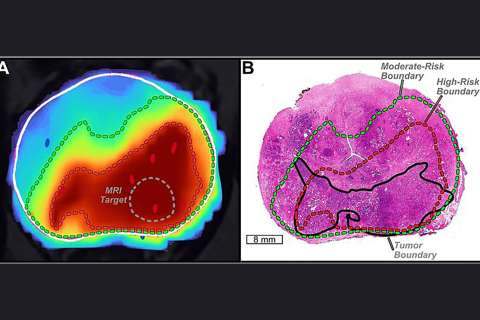Queasiness. Upset stomach. Loss of appetite. Headache. Sensitivity to smells. These are all possible symptoms of nausea, a condition that commonly accompanies cancer treatment. Studies show that 40% to 70% of people with cancer experience nausea or vomiting.
Patients are typically prescribed anti-nausea medication as part of treatment, says Sarah Washburn, MS, RDN, CSO, a dietitian with the Simms/Mann UCLA Center for Integrative Oncology. But everyone experiences treatment side effects and symptoms of nausea differently, so there’s no one-size-fits-all solution, she says.
Types of nausea
First, there are different types of nausea. It can be anticipatory, when fear about treatment causes nausea; acute, in which nausea occurs within minutes or hours of treatment; refractory, when nausea persists despite medication and other interventions; and chronic, which can be a symptom of cancer or a side effect of treatment. Constipation, another common experience for people with cancer, can also cause nausea.
People who’ve had motion sickness or morning sickness during pregnancy are more likely to experience nausea during cancer treatment, Washburn says.
Managing nausea requires an individualized approach, she says. She recommends patients monitor their nausea symptoms and response to treatment and tailor their medication usage accordingly.
“You may learn that you need to get up every morning and take it, or you may have to actually take it every eight hours, or you may notice you don’t have to take it at all,” Washburn says.
Some patients feel nauseated the first few days after each treatment starts, then things level out, she says. Others feel fine for the first few days – especially if they received anti-nausea medication at the time of their chemotherapy treatment – and don’t have to take more medication until later.
Treating nausea with dietary changes
Nausea is usually worse on an empty stomach, Washburn says, so she suggests people undergoing cancer treatment eat small, frequent meals.
“Just keeping something in your belly can be helpful for a lot of patients,” she says.
Drinking fluids is also helpful, she adds.
Fragrant, aromatic foods can exacerbate nausea, so it’s a good idea for patients to avoid the kitchen when someone is sautéing onions, for example. For people sensitive to food smells, eating cooler foods can help, Washburn says.
“The hotter a food is temperature-wise, the more aromatic,” she says. “So maybe if you’re having a cup of soup, you let it sit and cool for five to 10 minutes before you eat it.”
Certain smells can also ease nausea. For some people, the scent of peppermint or ginger is soothing. For others, such scents (or perfumes) can make nausea worse.
Similarly, foods that calm the belly vary from person to person.
“I’ve had some patients that say, ‘Potato chips are the thing that solved my nausea’ or, ‘If I eat spicy foods, that helps my nausea,’” Washburn says.
Whether it’s smelling ginger or eating potato chips, Washburn tells patients that if something seems to be working to ease their nausea, they should continue with it.
“If your perception is that it works, or you think it’s going to work, try it,” she says.
The best response to nausea related to cancer treatment is often a multidisciplinary one that includes medication and dietary awareness, Washburn says. And once treatment is complete, the issue generally resolves within a few weeks.





